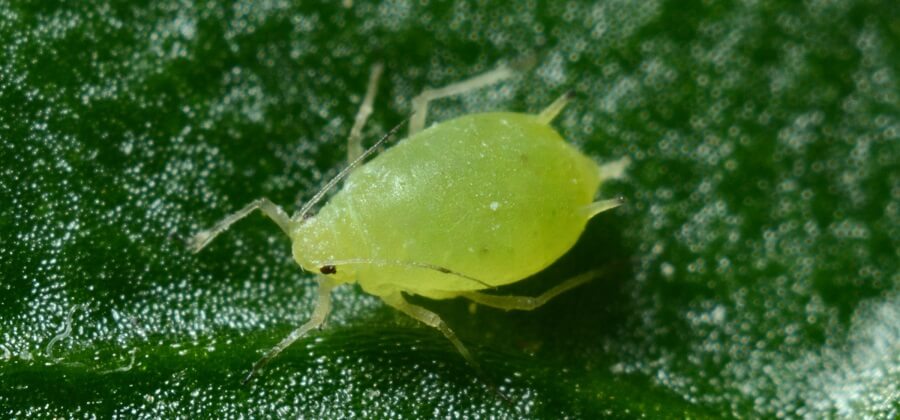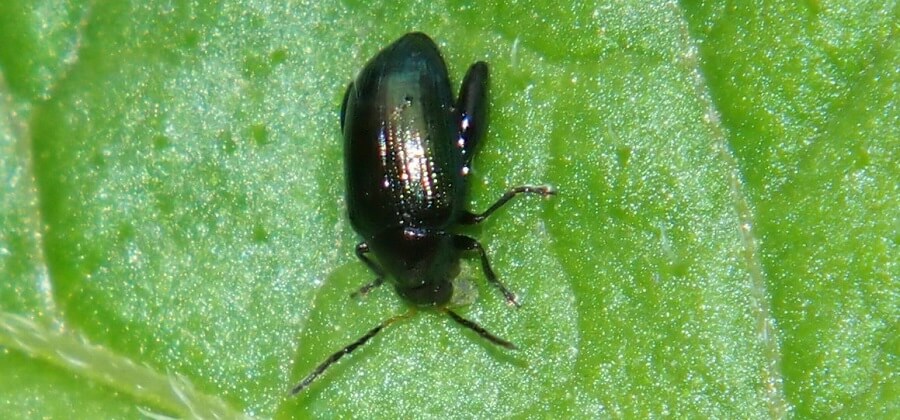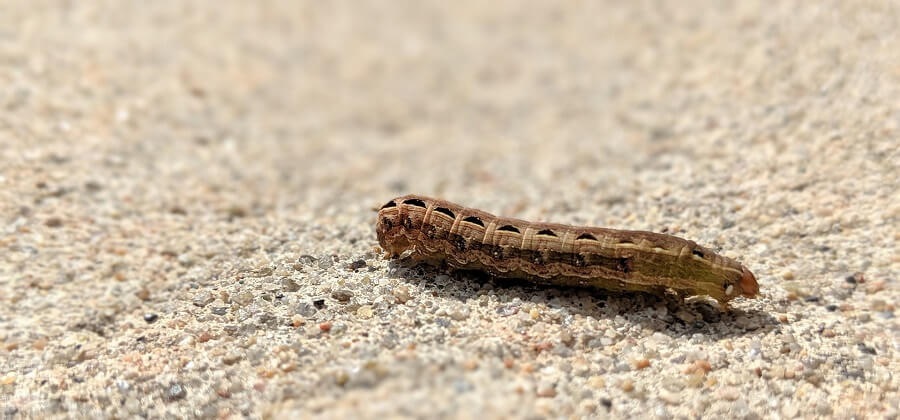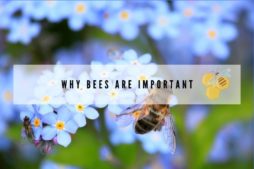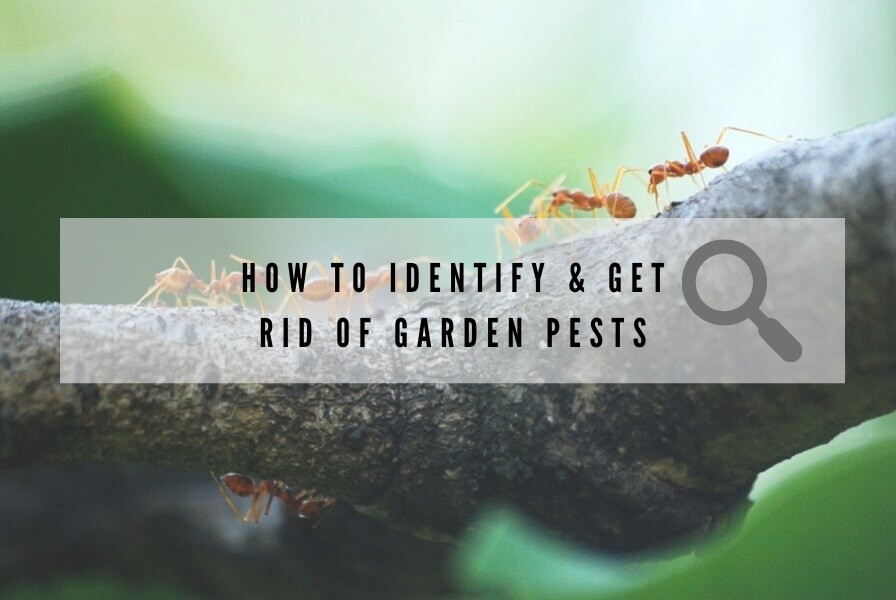
Have pesky pests taken over your garden? Common garden pests can wreak havoc on flower beds, crops, garden furniture and the general ecosystem of our outside spaces. Although we can live in harmony with some pests, there usually comes a point where we can’t take anymore and have to take steps to get rid of them for good (or at least for a short while!)
Common Garden Pests
Read on or skip to the garden pest you want to know more about.
Jump to the pest identification infographic – click here
Aphids
Aphidoidea
Weather: Warmer climates | Active times: Spring to late summer | Found: gathering on plants in groups
Aphids are destructive pests that will usually appear in your garden as the weather gets warmer. They are much feared in more temperate regions because of the damage they can cause. Each type of aphid is generally named after their plant of choice (e.g apple aphid, cotton aphid, black peach aphid[i].
Characteristics
- maximum of 4mm in length
- bulbous abdomen
- variety of colours (green, brown, black, yellow, white)
- can have wings, but many are wingless
Damage caused
- Leaf loss or twisted leaves
- Spotty yellow discolouration on the underneath of leaves
- Dry or wilted leaves
- Distorted, curled or deformed leaves
- Abnormal growths/galls on leaves
- Black or dark brown ‘sooty’ fungus[ii].
Prevention
- Spray dormant horticultural oil to kill eggs
- Introduce ladybirds into your garden to control the aphid population
- Plant catnip to repel them
- Plant ‘traps’ of nasturtium and mustard that will keep them away from valuable plants
How to get rid of aphids
- Spray cold water on plant leaves to dislodge groups of aphids
- Dust plants with flour (this will constipate them)
- Wipe leaves down with a mild mixture of dish soap and water
- Use Neem oil or insecticidal soap
Slugs
Gastropoda

Weather: Rainy, moist climates | Active times: at night-time, all year round | Found: on plants or in dark, humid places
Slugs are the most widely complained about garden pest, you’ve more than likely caught a few munching away at your favourite flowers, feasting on your veg patch or gathering on your wooden garden furniture. They love humid climates and will be more present during rainy seasons, usually coming out of their hiding places at night[iii].
Characteristics
- 1-3in long
- dark brown, orange or grey
Damage caused
- Holes in leaves, flowers and stems
- Slime trails across garden
Prevention
- Plant repellents such as wormwood, rosemary, fennel and anise[iv]
- Remove places that they shelter
- Encourage predators like newts and hedgehogs
- Create a barrier with copper tape or egg shells, pine needles and sharp sand
How to get rid of slugs
- Use nematodes
- Sprinkle salt on them or around problem areas
- Lure them with salad leaves or dry pet food and dispose of them
- Create a trap using beer (find out how here)
Ants
Formicidae

Weather: prefer warm weather | Active times: April – October | Found: in lawns, under paving, amongst plant roots and in compost bins
Ants are more of a nuisance than anything and cause very little damage to plants. They’re generally good for the ecosystem of your garden so you should leave them alone when possible.
Characteristics
- 0.2in long
- brown or black in colour
- large heads, elbowed antennae[v]
- hard exoskeleton
- some varieties have wings
Damage caused
- Heaps of soil above ground
- Soil may cover low-lying plants and prevent growth
- Ants nests may displace plant roots
Prevention
- Control the aphid population in your garden. Ants feed off the honeydew aphids leave on plants.
- Repel them with cayenne pepper or ground cinnamon
How to get rid of ants
- Sprinkle artificial sweetener near the ants – this is fatal to them[vi]
- Set a borax and sugar trap
- Use a shop bought ant repellent
- Don’t destroy the ants nest – more queen ants will come and set up different nests nearby
Flea Beetles
Alticini
Weather: prefer hot weather| Active times: Spring – Late Summer | Found: on plants and around roots
Flea beetles are widespread, and there are 100 different species of them in the UK[vii] alone. They generally feed on brassicas and allied plants like cabbage, swede, turnips, salad leaves and wallflowers.
Characteristics
- 2-3mm long
- Black, brown, blueish, bronze or grey
- A few species have stripes
- Large back legs[viii]
Damage caused
- Round small holes in foliage of plants
- Damage young plant leaves, causing a ‘lacy’ appearance
- Shallow pits on leaves and stems
- Wilted or stunted plants
- Spread diseases such as blight
Prevention
- Delay spring planting for a couple of weeks – flea beetles emerge in early spring[ix]
- Till your garden in the autumn to unearth the beetles
- Plant catnip and basil to repel them
- Plant radishes and nasturtium (which they are attracted to) to keep them away from important plants
How to get rid of flea beetles
- Set white sticky traps to catch jumping beetles
- Use insecticides in early spring
- Dust plants with plain talcum powder
Greenhouse whitefly
Trialeurodes vaporariorum
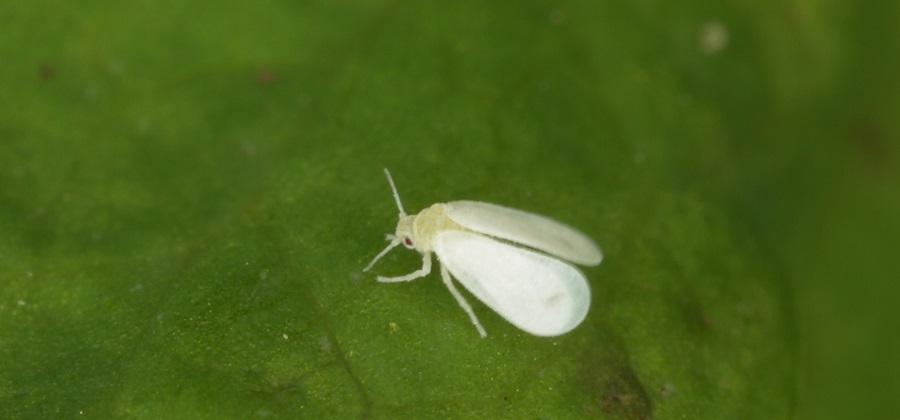
Weather: warm weather| Active times: all year | Found: on host plants, under leaves
Whitefly are small pests that much like aphids, feed on the sap from plants and secrete honeydew. They aren’t generally an issue for outdoor plants because they don’t live in cold conditions, but they can be damaging to houseplants and greenhouse plants. Other types of whitefly include the cabbage whitefly and viburnum whitefly.
Characteristics
- 1.5mm long
- White
- Moth-like appearance
- Winged
- Found in groups
Damage caused
- Sticky plants or leaves
- Weakened plants
- Leaf discolouration
- Black or brown sooty moulds on plants
Prevention
- Use a fine mesh over plants
- Inspect new plants for infestation before planting
- Mulch plants to make it harder for them to find a host plant
How to get rid of whitefly
- Spray off with a hose or spray bottle
- Use an organic insecticidal soap on affected leaves
- Set up sticky traps to catch the whitefly
- Introduce parasitic wasps to your garden
Cutworm
Agrotis segetum and Noctua pronuba
Weather: warm weather | Active times: at night-time, all year round | Found: base and leaves of plant stems
Cutworm is an umbrella name for many different species of moth larvae but they are usually turnip moth larvae. The larvae are caterpillar-like in appearance and come out to feast on plants during the night, causing more damage as they mature[x]. Favourite crops include any young seedlings, lettuce, beans and cabbage.
Characteristics
As a Larvae
- 40mm long
- Plump and smooth
- Browny grey colouring
As a Moth
- 4cm wingspan
- Brown forewings
- White hindwings
Damage caused
- Wilted plants
- Plants which look like they’ve been cut off at the soil line
- Eaten stem bases
- Slug-like holes in foliage
Prevention
- Create a barrier of aluminium foil or cardboard collars around seedlings
- Remove plant remains at the end of the growing season to get rid of any eggs
- Encourage predators into your garden (birds, wasps and ground beetles)
- Adult moths lay eggs in dense vegetation so tidy up any neglected areas of your garden
- Use insect-proof mesh coverings
How to get rid of cutworm
- Pluck the larvae out of soil at night and destroy them
- Use organic insecticides on plants
- Surround plants with diatomaceous earth
Keep your garden pest-free
We’ve only covered the tip of the iceberg with pests that could be lingering in your garden. Keeping an eye out for crop damage at all times of the year, maintaining your soil well and being ready to jump onto any issues straight away will help you to keep your plants thriving.
Other than treating your garden for specific pests, you can follow this advice to keep garden pests away.
Make sure your soil is healthy – healthy soil = a healthy garden ecosystem. It may take a few years to establish healthy soil and activate helpful microbes that will fend off pests, but being patient is worth it.
Attract predatory & beneficial animal – one way to control the pest population is to provide a healthy environment for beneficial insects and animals that will feed on the pests. Toads, birds, wasps and ladybirds are all great to have in your garden.
Plant common pest repellents – there are a handful of plants which repel a number of pests. Keep insects away by planting annuals like garlic and coriander and perennial herbs like thyme and anise around important crops.
See our guide on companion planting to keep pests out of your garden here
Pest Identification Infographic

References
ants.com, n.d. Characteristics of Ants. [Online] Available at: https://ants.com/characteristics-of-ants/ [Accessed March 2021].
Canna, n.d. Aphids – in detail. [Online] Available at: https://www.canna-uk.com/aphids_in_detail [Accessed March 2021].
Funnell, R., 2018. HOW TO GET RID OF SLUGS: 10 SOLUTIONS. [Online] Available at: https://www.theenglishgarden.co.uk/expert-advice/gardeners-tips/how-to-get-rid-of-slugs-10-solutions/ [Accessed March 2021].
GrowVeg, n.d. Cutworm. [Online] Available at: https://www.growveg.co.uk/pests/uk-and-europe/cutworm-turnip-moth/ [Accessed March 2021].
Lovethegarden, n.d. Sooty mould. [Online] Available at: https://www.lovethegarden.com/uk-en/article/sooty-mould [Accessed March 2021].
Nickleson, L., 2017. Got Ants in Your Plants? Here’s What You Need to Know. [Online] Available at: https://www.towergarden.com/blog.read.html/en/2017/6/control-ants-in-the-garden.html [Accessed March 2021].
RHS, n.d. Flea beetles on brassicas and allied plants. [Online] Available at: https://www.rhs.org.uk/advice/profile?pid=510 [Accessed March 2021].
The Editors, n.d. FLEA BEETLES. [Online] Available at: https://www.almanac.com/pest/flea-beetles [Accessed March 2021].
The Editors, n.d. SLUGS AND SNAILS. [Online] Available at: https://www.almanac.com/pest/slugs [Accessed March 2021].
University of Minnesota Extension, 2018. Flea beetles in home gardens. [Online] Available at: https://extension.umn.edu/yard-and-garden-insects/flea-beetles [Accessed March 2021].
Sources
[i] https://www.canna-uk.com/aphids_in_detail
[ii] https://www.lovethegarden.com/uk-en/article/sooty-mould
[iii] https://www.almanac.com/pest/slugs
[iv] https://www.theenglishgarden.co.uk/expert-advice/gardeners-tips/how-to-get-rid-of-slugs-10-solutions/
[v] https://ants.com/characteristics-of-ants/
[vi] https://www.towergarden.com/blog.read.html/en/2017/6/control-ants-in-the-garden.html
[vii] https://www.rhs.org.uk/advice/profile?pid=510
[viii] https://extension.umn.edu/yard-and-garden-insects/flea-beetles
[ix] https://www.almanac.com/pest/flea-beetles
[x] https://www.lovethegarden.com/uk-en/article/sooty-mould
Ryan Jenkins is a professional gardener and has been working in the gardening industry for over 25 years. This has allowed Ryan to accumulate a vast wealth of gardening knowledge which he shares on the Sefton Meadows blog.

